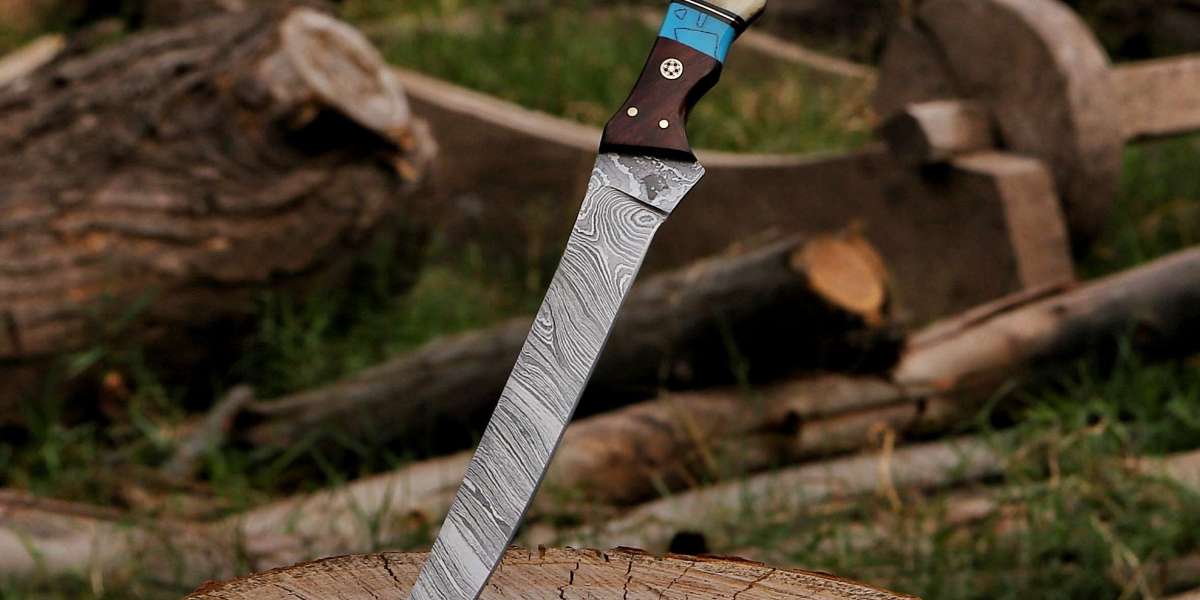Introduction
A fillet knife is an essential tool for precise and efficient filleting of fish and meat. To get the most out of your knife, it's crucial to understand its anatomy, including the design features and materials used in its construction. This knowledge will help you choose the right fillet knife and maintain it properly. In this comprehensive guide, we delve into the various components of a fillet knife, explaining their functions and how they contribute to the knife's overall performance.
Key Components of a Fillet Knife
1. Blade
a. Blade Material
The blade material significantly affects the knife's performance, durability, and maintenance requirements. Common materials include:
- Stainless Steel: Known for its corrosion resistance and ease of maintenance. It is a popular choice for fillet knives due to its ability to withstand the harsh conditions of working with fish and meat.
- High-Carbon Steel: Offers excellent sharpness and edge retention but requires regular maintenance to prevent rust. This material is favored for its superior cutting performance.
- Damascus Steel: Combines several layers of steel to create a strong, flexible blade with a distinctive patterned appearance. It is highly valued for its sharpness and aesthetic appeal.
b. Blade Length
The length of the blade affects the knife's versatility and suitability for different tasks. Fillet knives typically range from 6 to 9 inches:
- Shorter Blades (6-7 inches): Ideal for smaller fish and intricate tasks that require precision.
- Longer Blades (8-9 inches): Better suited for larger fish and meat, offering a greater cutting surface for efficiency.
c. Blade Flexibility
Flexibility is a crucial feature for a fillet knife, allowing it to bend and maneuver around bones and skin with ease. A flexible blade is essential for achieving precise, clean cuts.
d. Blade Shape
The shape of the blade influences its cutting ability:
- Straight Edge: Provides clean, precise cuts, ideal for filleting and boning.
- Curved Edge: Offers enhanced control and maneuverability for detailed work.
- Serrated Edge: Useful for cutting through tougher materials or skin, although less common in fillet knives.
2. Handle
a. Handle Material
The handle material affects grip, comfort, and durability. Common materials include:
- Rubber: Provides a non-slip grip, especially when wet, enhancing safety and control.
- Wood: Offers a traditional look and comfortable feel but may require more maintenance to prevent damage from moisture.
- Plastic: Durable and easy to clean, often designed ergonomically for comfort.
b. Handle Design
The design of the handle impacts the knife's balance and ease of use:
- Ergonomic Shape: Ensures a comfortable grip and reduces hand fatigue during extended use.
- Full Tang Construction: The handle extends the full length of the blade, providing better balance and strength.
3. Tang
a. Full Tang
In a full tang knife, the blade extends through the entire length of the handle. This design offers greater strength and balance, making it suitable for heavy-duty tasks.
b. Partial Tang
A partial tang does not extend the full length of the handle. While it can still provide adequate performance for many tasks, it may not offer the same level of strength and balance as a full tang knife.
4. Spine
The spine of the blade is the top, unsharpened edge. It contributes to the knife's overall strength and durability. A thicker spine offers more strength, while a thinner spine provides greater flexibility.
5. Heel
The heel is the rear part of the blade, often used for cutting through tougher materials or making precise cuts. A well-designed heel provides better control and stability during use.
6. Tip
The tip of the blade is the pointed end, used for precision tasks such as removing bones or making intricate cuts. A sharp, pointed tip enhances the knife's versatility and effectiveness.
Choosing the Right Fillet Knife
When selecting a fillet knife, consider the following factors based on the anatomy discussed:
- Blade Material: Choose stainless steel for low maintenance or high-carbon steel for superior sharpness. Damascus steel offers both performance and aesthetic appeal.
- Blade Length: Select a length based on the size of the fish or meat you typically handle.
- Handle Material and Design: Opt for a handle that provides a comfortable, secure grip and complements the knife’s balance.
- Tang Type: Consider a full tang knife for added strength and durability, especially for heavy use.
Maintaining Your Fillet Knife
Proper maintenance ensures the longevity and performance of your fillet knife:
- Clean Regularly: Wash the knife with warm, soapy water and dry it thoroughly after each use.
- Sharpen as Needed: Use a sharpening stone, manual sharpener, or electric sharpener to maintain the blade’s edge.
- Store Properly: Keep the knife in a sheath, on a magnetic strip, or in a knife block to protect the blade and prevent accidents.
Conclusion
Understanding the anatomy of a fillet knife, including its blade design and materials, is essential for selecting the right tool and maintaining its performance. By considering the key components and their functions, you can make an informed decision and ensure that your fillet knife delivers precision and reliability in every cut












